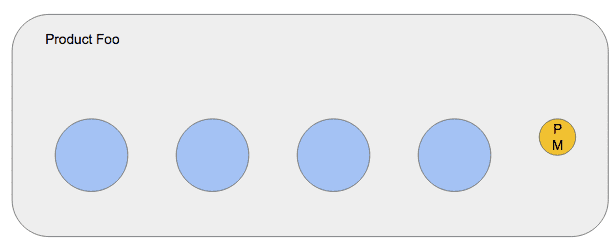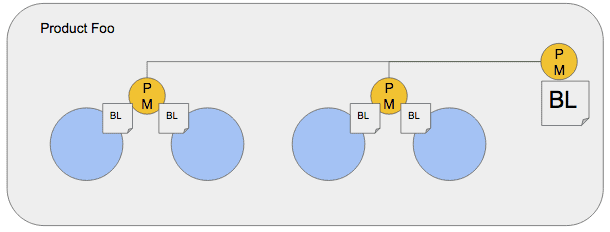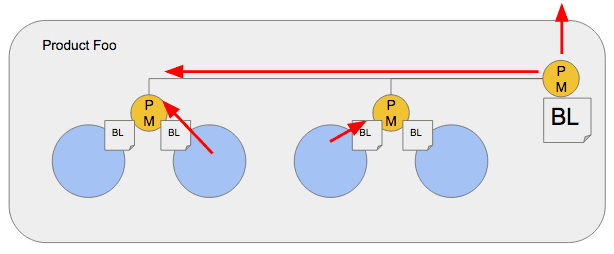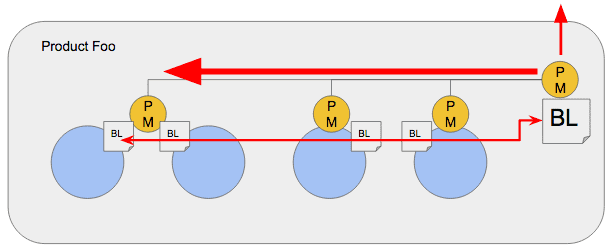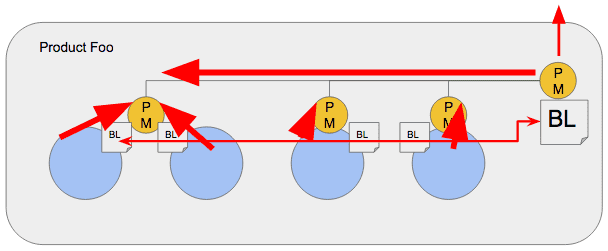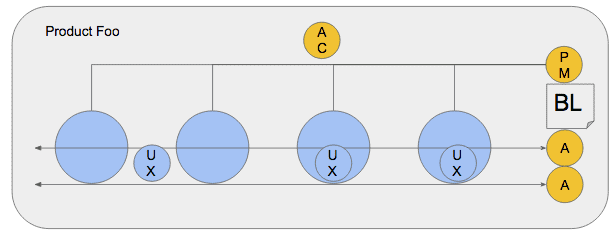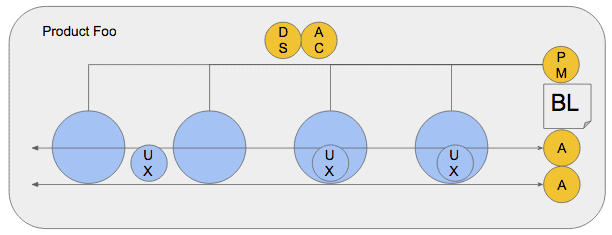Some brief thoughts on a scaling up product management.
You’ve got four teams working on a single product. You have a single product manager, but that PM is getting overwhelmed.
You hear that “every team needs a PM!” So you hire some less experienced PMs to work underneath the original PM.
But there are issues. The original PM is having trouble managing up to external stakeholders AND teaching the less experienced PMs.
Also, there is tension brewing on the teams. The more junior PMs are getting overwhelmed by the teams.
So we hire another PM. Which increases the management overhead.
Meanwhile, there is a bunch of coordination required to synchronize the individual team backlogs/roadmaps with the “real backlog” and roadmap.
But the tension keeps brewing … “we need more experienced PMs!”
How might you “fix” this? Some ideas …
First, eliminate individual team backlogs (since their backlogs are driven by the needs of the single product).
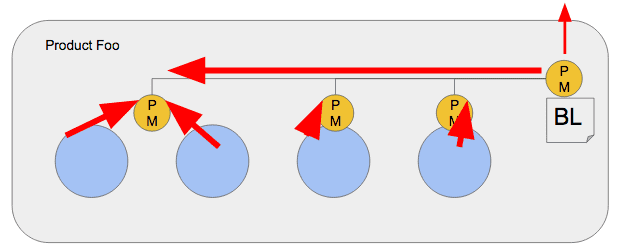 Next — and this is hard — find the strongest junior PM prospects and make them apprentices to the lead PM. These aren’t APMs (the team considers the lead PM to be their PM)
Next — and this is hard — find the strongest junior PM prospects and make them apprentices to the lead PM. These aren’t APMs (the team considers the lead PM to be their PM)
, but rather true apprentices in that they have a structured learning plan and pick up specific tasks/responsibilities.
The apprentices take on tasks like:
- Very regular customer calls and research
- Facilitation
- Competitive research
- Data analysis and presentation But how can teams function without a PM? Well 1) they have one, and 2) the goal is to have self-sufficient teams. Self-sufficient teams should be able to take on more broadly defined problems.
To help with this, hire an Agile Coach to help the teams become more self-sufficient. The AC works in a pull fashion (not push).
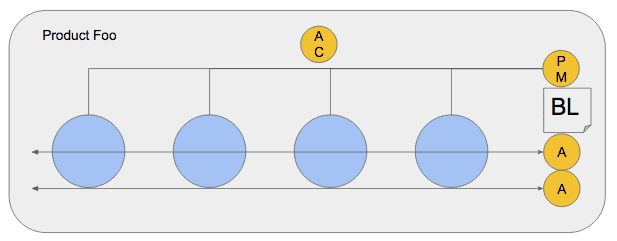 Make sure the team’s have dedicated UX (or as close to dedicated as possible)
Make sure the team’s have dedicated UX (or as close to dedicated as possible)
.
And see if you can scrounge up a data scientists or analyst for the group.
I’ve seen this build the necessary resiliency/maturity. All the hats are present.
Why does this work?
- More realistic career progression. In the original model, the only way one of the PMs can progress, is if their boss leaves. The expectations of an apprentice are a bit different.
- Throwing a junior PM on to a team is a recipe for tension (especially with more experienced engineers). The apprentice model structures their learning.
- Working off a single backlog keeps the team focused, and prevents unhealthy local optimization. Eliminates the coordination efforts between the various backlogs.
- Focus. If the teams aren’t working on “products”, then they really don’t need a product MANAGER. There is a single product here. The model makes the overall group more resilient.
- A single experienced PM should be able to provide sufficient direction for four teams, provided the teams are more mature, and can take broader problems and break them down. If you find yourself needing a “PO” in this case, then it is typically a sign that the individual teams need more practice/support. Anyway. Just some brainstorming. Appreciate feedback.
